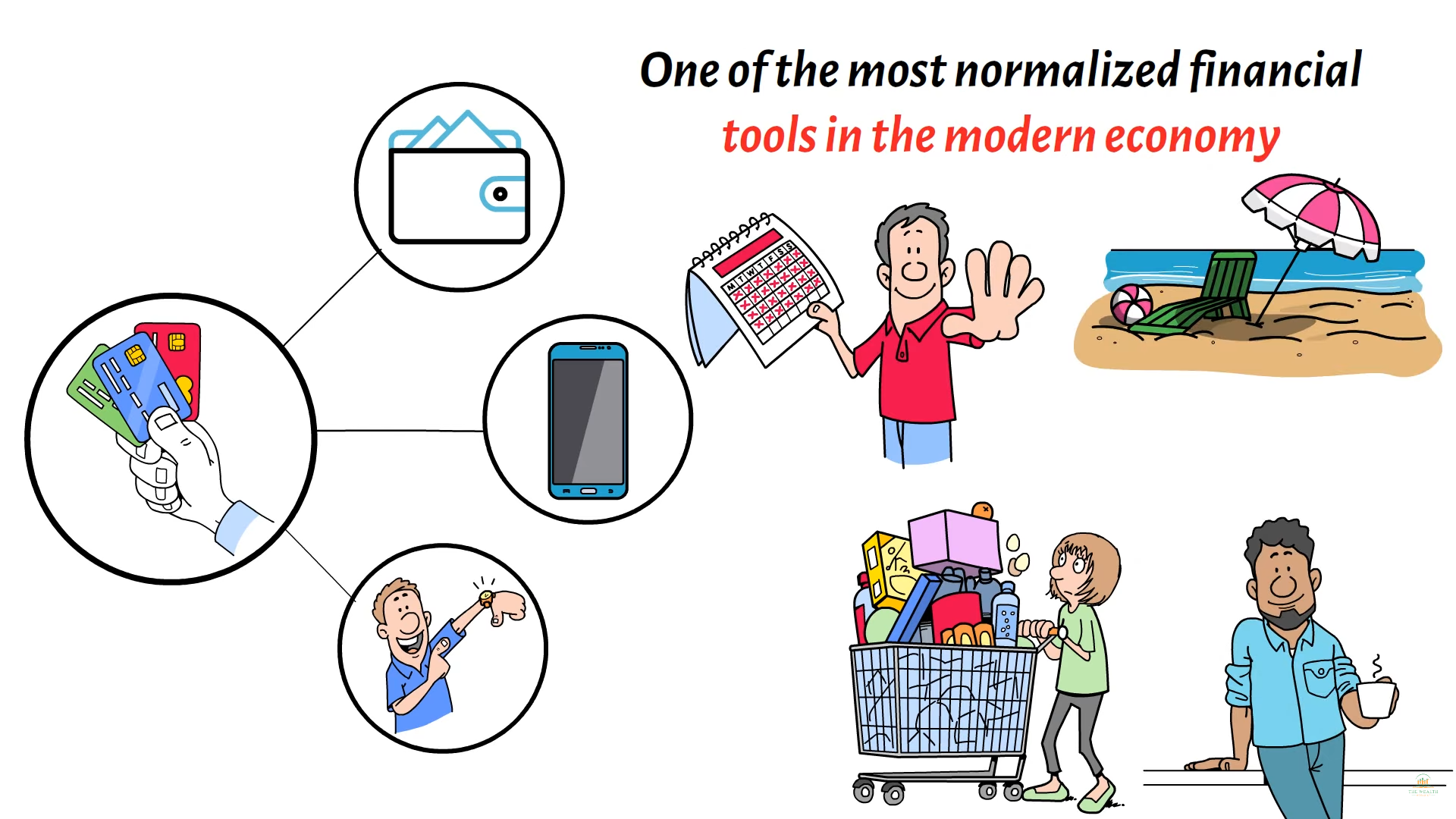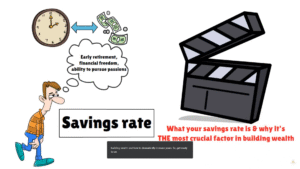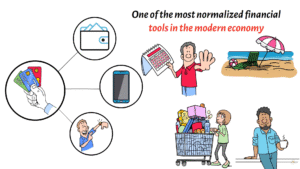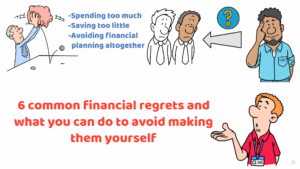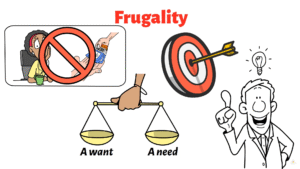Intro
2025 Credit Card Trap: Stop hidden fees from draining you. Get smart tips for the middle class only on it4grow!
They’re in our wallets. On our phones. On our wrists. Sleek, shiny, and loaded with benefits. Credit cards.
They’re one of the most common financial tools in the modern economy. We use them to buy coffee, pay for groceries, book vacations, and sometimes… just make it through the week.
But behind swipe, or tap, is a deep truth. Credit cards are not just equipment of modern finance. They are part of a well -oil machine that sells money from the middle class selling the illusion of freedom.
Let’s talk about how credit cards are a silent trap keeping the middle class poor.
How’d We Get Here?
How did we get here? The concept of buying now and paying later isn’t exactly new. Back in the early 1900s, department stores and oil companies issued “courtesy cards” to their best customers. These were early forms of store credit, designed to encourage loyalty and spending.
But the first true concept of a credit card, as we know it today, began with the Diner’s Club Card in 1950. It was a cardboard card that could be used at a few dozen restaurants in New York and it introduced a revolutionary concept: Universal Credit.
Instead of being tied to one store, you could now carry a card that would let you spend money you didn’t have yet… almost anywhere.
Middle Class Affect
At first, credit cards were marketed to professionals and business travelers; the people who didn’t even really need credit, and could afford to pay their bills in full.
But lenders quickly figured out that if everyone paid their bill, there were no late fees, and no interest; they were making no money.
So, they began targeting the middle class: the growing demographic of Americans who had stable jobs, modest savings, and big dreams.
Credit cards weren’t just tools anymore; they were status symbols. You weren’t just spending money. You were earning points and gaining rewards.
Illusion of Control
Here’s what they don’t tell you when you sign up for that shiny new rewards card: It’s not about the perks. It’s about behavior.
Lenders understand that the average person doesn’t pay off their balance every month. The system is designed to encourage more and more spending; a dinner out with friends one night, a new pair of shoes, or going to that last minute concert.
You’ll just swipe it on your card and pay it back later, right?
But when that balance rolls over, the interest begins, and it never stops. And banks are betting on that.
They don’t make their billions from the disciplined. They make them from the hopeful, the overworked, the financially strained. The people who believe they’re in control until they’re not.
In many ways, credit cards are a symptom of a bigger issue:
- Wages have stagnated.
- Costs have soared.
- And the middle class has been left to fill the gap… with debt.
Need to pay for car repairs? Swipe.
Groceries? Swipe.
A trip, just to feel something after months of burnout? Swipe.
Credit cards becomes a lifeline and a noose.
But here’s the uncomfortable truth. Credit cards don’t help most people build wealth. In fact, it keeps them from building it.
According to the Federal Reserve, over 45% of Americans carry credit card debt month to month. The average interest rate? Over 22%.
This isn’t a glitch in the system. It IS the system.
Credit card companies make billions every year, not from the rich, but from the stressed and overworked.
The Normalization Of Debt
Debt has become so normal in American life; we don’t even question it.
But these payments don’t build wealth, they don’t build assets, and they don’t build freedom. They build profit for someone else.
The middle class is now caught in a treadmill of debt repayment, and credit cards play a central role in that trap.
Unlike a mortgage or student loan, which at least has a theoretical end date, credit card debt is revolving. That means it’s open-ended, ongoing, and easy to stretch out forever. And that’s exactly how the industry likes it.
Every aspect of a credit card is engineered with one goal: to keep you paying just enough to stay afloat, but not enough to get ahead.
Take minimum payments, for example. They’re usually set at about 1–3% of your total balance. That sounds manageable until you realize what it actually means.
Let’s say you owe $6000 and are paying the minimum amount of $200 a month. It would take you almost 4 (3 years and 8 months) years to pay off the card, and in that time, you’d pay an additional $2800 thanks to compound interest working against you.
And all that’s assuming you don’t put any other payments on the card and nothing comes up that stops you from paying on time every month.
The more time you spend in debt, the more interest you pay.
Your number 1 priority with any high interest debt should be to pay it off as aggressively as possible, and paying above the minimum.
Lifestyle Inflation
One of the sneakiest ways credit cards keep people poor is by encouraging lifestyle inflation.
In a world where wages have barely kept up with inflation, credit cards bridge the gap between what people earn… and the life they feel they should be living.
Don’t have the cash for that $3,000 vacation? Put it on a card.
Need new furniture before guests arrive? Swipe it.
Want to keep up with friends who seem to be doing better? There’s a card for that.
Over time, this becomes a habit, and habits become financial norms. The trouble is, credit cards let you feel rich today — while quietly making you poorer tomorrow.
And for millions of Americans, the consequence is chronic financial instability.
But perhaps the most insidious part of all of this?
For a lot of middle-class American families, it’s not lifestyle inflation, but simply life that requires the card.
Most people don’t feel like they have a choice but to use credit cards.
If you don’t have an emergency fund, a credit card becomes your safety net. If your paycheck runs out before the end of the month, the card fills in the gap.
It’s not always being used for luxury, sometimes it’s just for survival.
And that’s exactly what makes this issue so dangerous. Because when survival depends on debt, poverty becomes a business model.
The result? A generation of working Americans fighting for financial freedom while sinking slowly under the weight of compounding interest.
Breaking Free
Here’s the good news. You can escape the credit card trap, but it will require a change of behavior and a change of mindset.
The first step? Awareness. So many people don’t even realize they’re stuck. They just continue to make the minimum payments, they chase the reward points, and they believe that having more credit is the same as having more money.
But once you understand how lenders profit from these decisions, it’s easy to fix.
The next step is creating your own safety net. Credit cards are often used as emergency funds in disguise, but relying on debt in a crisis is a recipe for disaster.
Instead, build an actual emergency fund. Start with $500. Then $1,000. Eventually, aim for 3–6 months’ worth of expenses in a high-yield savings account.
This shouldn’t be used for investments. It is there to be a lifeline, so that when life throws a curveball, you’ll have options.
Next, rethink how you view credit entirely. Credit cards aren’t evil. They are tools just like a hammer or a knife. They’re useful in the right hands, but dangerous in the wrong ones.
If you can pay your balance in full every month, then sure, take advantage of the rewards. But never fall for the illusion that rewards are worth the debt. Cashback and miles mean nothing if you’re paying over 20% interest month after month.
If you’re already deep in debt, consider cutting off the source. Freeze your cards. Remove them from digital wallets. Cut them up if you have to. Stop using them for everyday spending.
Then, create a debt payoff plan. Whether you use the avalanche method by ordering your debts by interest rates or the snowball method where you order your debts by balance. Pick a plan that works for you, remain diligent, and get those debts paid off.
And lastly, always remember, you can speak to financial professional. Trying to work your way out of debt can feel overwhelming. Know that you can always reach out to a financial professional if you need help figuring out your next steps.
Credit cards aren’t going away, but living your life one minimum payment to the next isn’t true freedom.
True freedom is being able to say no. It’s being able to walk into a store and know you could buy something, but don’t need to.
It’s your ability to sleep at night without thinking about due dates and minimums and interest rates.
It’s living below your means, not to punish yourself, but to protect your future.
Because at the end of the day, wealth isn’t just what you earn. It’s what you keep. And the more of it that goes toward interest, the less of it goes toward building a life you truly own.
